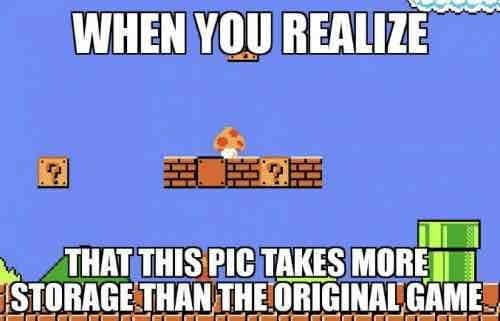this post was submitted on 01 Jul 2024
663 points (100.0% liked)
196
16725 readers
2368 users here now
Be sure to follow the rule before you head out.
Rule: You must post before you leave.
founded 2 years ago
MODERATORS
you are viewing a single comment's thread
view the rest of the comments
view the rest of the comments

The NES has a picture processor (PPU) that has special things made for 2D, cell (tile)-based graphics with hardware sprites. Being able to reuse tiles and express each tile with a few bytes really helps keep things small, as storage was very expensive back then. Also, without bank switching (which SMB1 did not have), the 6502 could only address up to 64kb of memory (including ROM and RAM).
The music was also kept small, as it was generated in real time by the audio processor that was embedded in the CPU.
I'm sure there's a disassembly out there along with some YouTube videos if you want to understand a bit more. IMO programming for these old systems is more fun compared to modern systems, which in comparison, have no limitations. It is a boon to creativity.
https://www.youtube.com/watch?v=Tfh0ytz8S0k Here is one good video explaining the basics of graphics on old systems.